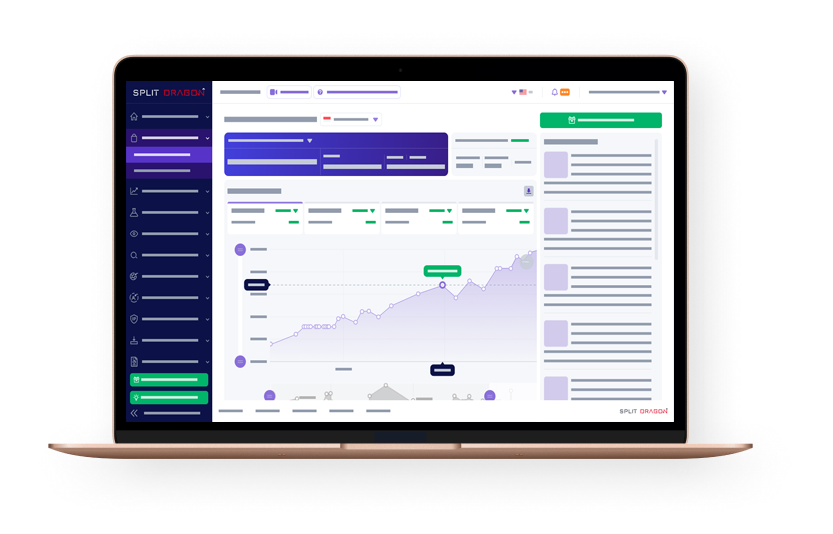The demand for products that aren’t locally available has shown an uptick in prevalence among consumers. In 2020, eCommerce cross-border sales climbed by 21%, compared to the previous year.
There’s always a continuous push for digital innovations. And technology continues to advance in rural areas and provinces. So there’s no doubt that eCommerce cross-border sales will continue a positive growth trend.
Cross-border selling is a lucrative opportunity to take your business to a higher level, but only if you’re prepared.
Here, we will talk about cross-border eCommerce and the essentials you’ll need to take your eCommerce business from local to global.
What is cross-border eCommerce?
Cross-border eCommerce is about selling your product internationally using online selling platforms like T-Mall, Shopee, and Alibaba.
Think of cross-border eCommerce as consumers browsing shelves that are displaying the products of the world — right at their fingertips.
One of the most important causes that drive international purchasing is a lack of availability of items locally.
Cross-border eCommerce offers flexibility and comfort, as there’s no longer a need for consumers to travel. It saves them time, plus they can easily compare items and check reviews to gain confidence before purchasing.
Outrank your competitors & increase your sales within the next 30 days.
Be a successful marketplace seller!
Learn MoreBy signing up, you agree to the Terms of service and Privacy Policy
Advantages of selling internationally
If your business is doing very well in the local market, then exploring international eCommerce just makes sense.
Widening your target market is one of the most obvious reasons why you would want to open your store to the world. But it’s just the tip of the iceberg. Below are the other possibilities and opportunities:
Decreased competition, increased competitive advantage
Sellers know that the real challenge when doing eCommerce selling is the competition. Although competitive pressure is a must in a healthy market, sometimes the competition itself is the reason why there are sellers who give up in this industry.
That said, many sellers engage in cross-border selling to decrease competition, and, at the same time, gain an advantage over their rivals.
If you see that your products can fill in the gap in the international market, you should seize the opportunity before someone else does.
Boost sales and revenue
Positioning yourself in the international arena can bring in a bigger audience to your products and attract more buying customers.
Moreover, once you transition to eCommerce cross-border selling, you will be selling directly to consumers (D2C), therefore effectively removing wholesalers. You can adjust your end-selling price, and take home a larger portion of the profit margin, resulting in an increase in sales.
Enjoy all-year-round demand
When you are selling domestically, most likely your selling strategy is confined to the season of your country. However, when you go beyond borders, you can take advantage of the peak season.
Enhance brand reputation
Another top advantage of cross-border selling is that it can enhance brand reputation. You’ll be introducing your brand to the international market and have access to your end customers.
Marketing-wise, this is a great opportunity to learn more about your customers. You will have more control over how you want them to see your products and brand, so you can strategize your marketing campaigns accordingly.
Moreover, with the information you’ve gathered, you can easily customize your products to suit the different markets’ needs.
Essentials when doing eCommerce cross-border selling
All the advantages of eCommerce cross-border selling have been established. Now let’s go to the tricky parts.
As mentioned earlier, doing eCommerce is a great opportunity, but it entails a lot of work if you want an uncomplicated and successful process.
Here are the things you need to tackle when doing international selling:
Market analysis
When you open a business domestically, you may already have an idea about the general market. However, if you’re selling internationally, foreign markets are relatively unknown to incoming businesses.
This makes market analysis vital. You need to know the feel of the local market and understand their pain points.
On the bright side, in cross-border eCommerce, there is a definite trend in top customer product category preferences. Fashion and electronics are the most popular among consumers, followed by pet care, food and beverage, and sporting items.
This demonstrates that there’s a growth opportunity for sellers across all categories, with multi-category sellers set to earn more due to a larger portfolio, which leads to more orders.
But the key to success here is to determine the right products at the correct pricing points.
Split Dragon’s market research tool offers valuable insights that help you find winning products to sell in the Southeast Asian marketplace. You can easily search for any product, see the current product trends, and calculate revenues and profitability.
Logistics
Each country has different sets of documentation and regulations. This helps ensure that buyers will receive their merchandise and that sellers will receive their payments. This will eliminate any non-completion risk and also reduce foreign exchange risk.
So you must become familiar with the norms and regulations of exporting and importing, as well as possess the necessary shipping paperwork.
And, depending on your product, you will need to secure proper licensing as well.
In general, these are the documents you need for international shipping:
Purchase Order (PO)
The PO is a document that officially states that an order has been received. It defines what you will deliver and how much it costs.
Invoice
A commercial invoice contains all of the information of a sales transaction, including the shipping terms between a vendor and a customer. It’s the official receipt for the transaction.
Bill of Lading
This is the official contract between the owner of the goods and the shipper. It’s the most important shipping document and must be included regardless of the form for transportation.
Packing list
This document shows information about the shipment, specifically how it’s packed, its dimensions, and the weight of each package.
Indeed, international shipping requires a lot of paperwork. But this is not a problem if you choose the right shipping company that knows the ins and out of international shipping and exporting.
The best thing about eCommerce cross-border selling is that you’re no longer working alone. You’ll become a part of a system and there are companies who can do the dirty work for you.
On the other hand, SEA marketplaces like Shopee and Lazada have crossborder programs where you don’t have to worry about additional charges and complicated paperwork.
Marketing
Establishing yourself in the global marketplace means dealing with markets that have different beliefs, cultures, and perhaps different understandings of your products, too.
And while eCommerce cross-border selling is a great way to reach new markets, other sellers are not far behind from doing the same thing in their next step.
Given that, you’ll need to go the extra mile when it comes to marketing so you can stay ahead of the competition.
The goal here is to create a well-recognized brand and image to stir curiosity from your target prospects. All while using a unified approach to marketing across borders, as if there are no global boundaries. So you can ensure consistency in your branding.
Here are the elements you need to focus on when it comes to cross-border marketing:
- Search Engine Optimization
- Descriptive images
- Bulleted, clear, and compelling descriptions
- Competitive pricing
- Personalized/Custom marketing campaigns
Automation
Managing products for the domestic market is already complicated as it is. And most businesses that are approaching D2C for the first time are likely to be unaware of the volume and complexity of selling cross-border.
If you want to venture into a bigger audience, we highly encourage you to invest in automation tools.
And optimizing product listings is, arguably, the most important reason why you should invest in them.
Nowadays, cutting-edge SaaS technology like Split Dragon is available for sellers to use for optimizing product listings (and marketing) to win in the marketplace, regardless of where you are selling.
These tools include:
- Search rank keywords to ensure that you are using the most relevant keywords in your product listings
- Product analyzer so that you’ll be using the winning variation of your listing
- IP protection to protect your brand’s product from fake resellers
- Competitor Tracking to beat competitors and know their moves, especially in pricing, vouchers, product titles, etc.
One important note is to use automation for data ingestion. Data is one of the most powerful tools you can use to gain a deeper understanding of the business you are in.
The data will be your guide on how to create effective campaigns, how to engage with your customers, and, overall, make informed decisions.
Stay ahead in eCommerce with cross border selling
Like anything else in this world, change is quick and all-encompassing when it comes to online selling. Keep afloat and soar high by learning how to adapt to these changes and exploring tools to help you stay ahead of your competition.
This, once again, is where Split Dragon will come in handy.
For more information on how we can help you take your business to the next level, visit our website, or contact us here.
Outrank your competitors & increase your sales within the next 30 days.
Be a successful marketplace seller!
Learn MoreBy signing up, you agree to the Terms of service and Privacy Policy





